Discover, Learn, immerse, Connect
Koh-i-Noor
The Koh-i-Noor diamond was mined at a location near Masulipatnam according to an account by Theophilus Metcalfe made at the request of Lord Dalhousie. It was owned by many illustrious Kings including the Iranian Nadir Shah and those of the Ghori Dynasty, Timurid Dynasty and the Afghan Durranis before it was acquired by Ranjit Singh from Shuja-ul-Mulk.
The Maharaja was curious about the value of the gem. When Wafa Begum, the beloved wife of the Koh-i-Noor’s last owner was asked, she replied, ”If a strong man were to throw 5 stones, 4 in cardinal directions and 1 vertically upwards and the space in between, was filled with gold and precious stones, it still wouldn’t equal the value of the stone.”
Ranjit Singh died in 1839. The empire had just begun recovering from the great loss when circumstances forced it into two prolonged wars. Upon the defeat of Punjab in the Second Anglo Sikh War, the Last Treaty of Lahore was signed. In Article 3 of the treaty, the British demanded the Koh-i-Noor be surrendered to the Queen of England. The conditions under which this treaty was signed were, however, those of deep duress. Not only was an additional regiment stationed outside Lahore, but the Resident of Lahore was also given instructions to impose British rule regardless of the outcome of the deliberations of the Council of Regency.
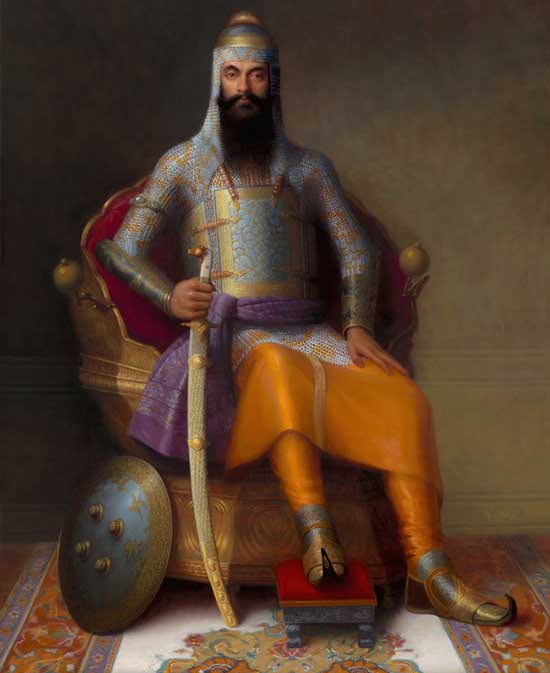
Maharaja Ranjit Singh
Painting by Manu Saluja
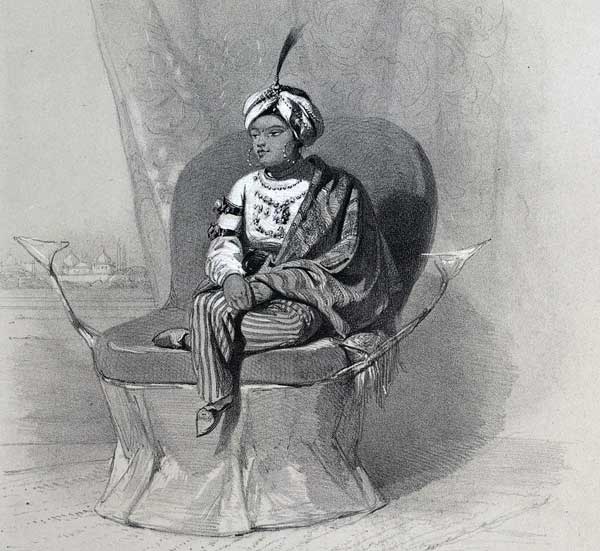
A young Maharaja Duleep Singh
The young new King of Punjab, Maharaja Duleep Singh led his people through these negotiations with honour and composure.
The Diamond, wrested from the Sikhs in terms of the treaty, was entrusted to Dr Login, the British guardian of the Maharaja. Governor-General Dalhousie himself travelled to Lahore to receive the Diamond from him and brought it to Bombay. The much-coveted Diamond was deposited in the Bombay Treasury in the presence of 4 other officers besides Dalhousie himself.
These 4 officials included Frederick Mackeson of the 14th Native Infantry and James Ramsay of the 22nd Native Infantry, Military Secretary to the Governor General. The task of transporting the Koh-i-Noor to London was entrusted to them by the Governor-General himself. The Diamond was placed inside a small iron box which was sealed with the Governor General’s seal. This box was placed inside a red despatch box, which was sealed with red tape and his Lordship’s seal again. The outer seal, however, was an imperfect impression. The red despatch box was in turn placed inside a chest and thus secured.
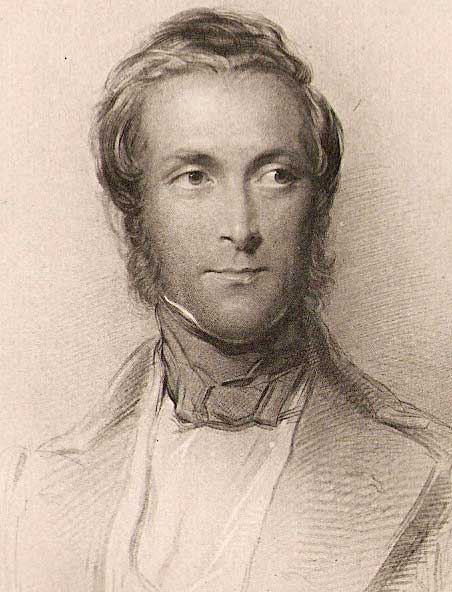
Governor-General Dalhousie
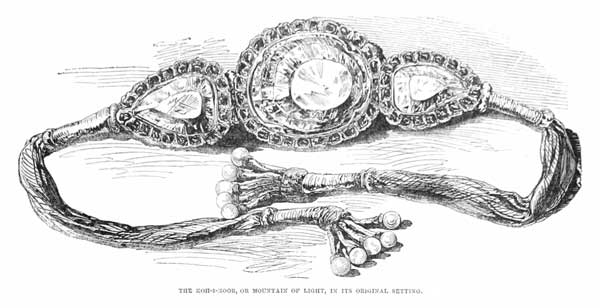
Ranjit Singh’s bazuband featuring the Koh-i-Noor
It’s retrieval, however, underwent some unforeseen accidents. While removing the box from the chest, Mr Muspratt, the Treasurer, pulling on the handle on the lid, caused the red tape to split, seal to break and the box to open. The only men to know of the inner contents of the despatch box were Dalhousie, Mackeson and Ramsay. Given the absence of the Governor-general, the two military men asked the Treasurer to vacate the room, so as to be able to examine the Koh-i-Noor at close proximity. Once satisfied, they collected their package and made their way to the ship.
The HMS Medea, under Captain Lockyer was chosen as the vessel to carry the Diamond across the seas. It carried the invaluable gem to Plymouth where Mackeson and Ramsay were greeted by Mr Onslow, the Secretary to the Chairman, East India Company. Mr Onslow was to accompany the two men to London at the earliest. It is at this stage, that some discrepancies begin to emerge. There are two letters from Mackeson and Ramsay to Melville and Dalhousie respectively, recounting two differing narratives of their trip to London. The lack of clarity surrounding the multiple custodians of the Diamond before its arrival in England sparked suspicions amidst the Court of Directors regarding the authenticity of the Royal gift. These were however overcome when both the Governor General of India and Secretary to the Governor General supported the testimonies given by the two officers.
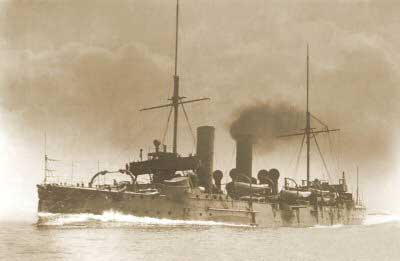
H.M.S Medea
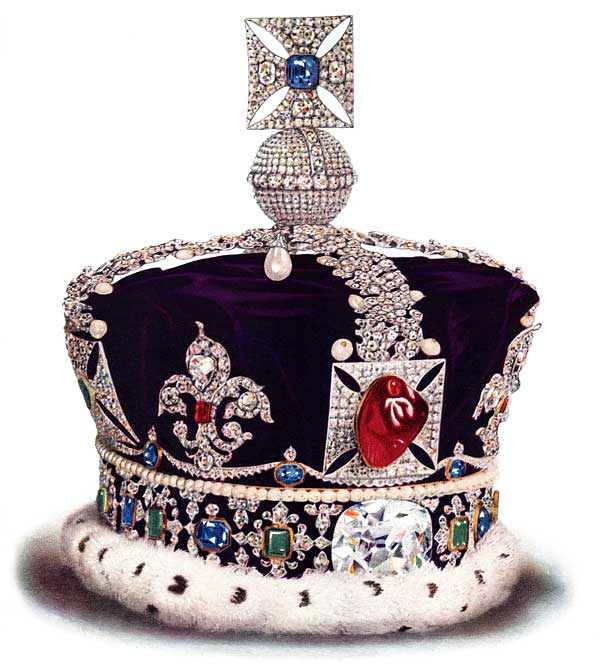
The crown of Queen Victoria featuring the Koh-i-Noor
Having arrived in England on the 29th of June 1950, the 3 men reached the India office in London on the 2nd of July 1850. The Diamond was gifted to the Queen on 3rd July 1850, the 250th anniversary of the EIC.
In 2016, the Government of India took a stand that the Diamond was not a gift and was forcibly taken from Maharaja Duleep Singh. They stated that Indian credentials of ownership of the Koh-i-Noor, given historical evidence, could not be doubted. Of late, we find examples of some European countries agreeing to repatriate artefacts as requested by their former Colonies. An example from December 2018 is the French President’s promise to return 26 artworks taken from Benin and a British museum’s recent decision (February 2019) to return the hair, cut from the head of Emperor Tewodros II to Ethiopia.
 Government of India
Government of India


